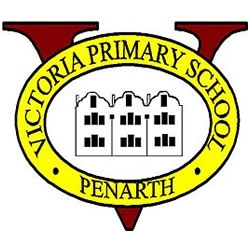
Organisation: Victoria Primary School
Intervention: Catch Up® Literacy, Catch Up® Numeracy
Submitted by: Mrs Jayne Hall and Miss Anne Mealing
Background
Victoria Primary School is situated in the centre of Penarth. The school provides education for pupils between 3 and 11 years of age. Pupils are taught through the medium of English and Welsh is taught as a second language.
There are currently 442 full-time pupils on roll; in addition, 89 children who attend the nursery on a part-time basis. Pupils entering the nursery and reception classes come from a wide range of socio-economic backgrounds and with varied levels of skills and communication. Pupils attending the school come from quite a mixed catchment area that is neither predominantly advantaged nor disadvantaged.
Implementation
Traditionally, our school has delivered Catch Up Literacy to pupils in Year 3 and then further Catch Up in Year 5, if needed.
The end of KS1 data and Salford reading tests will initially help to determine who will have Catch Up Literacy. Children who have a reading age of 6-24 months below their chronological age will usually be chosen, but teachers’ professional judgement makes the final decision.
Most pupils have two timetabled sessions per week with LSAs who access resources from the ALN support room, and the Catch Up® resources which are held in a central area of the school. The use of Catch Up® ICT resources is also encouraged where appropriate.
We monitor the delivery of Catch Up® Literacy via observations; LSAs welcome advice following these, and progress is monitored through the ALNCO’s tracking system. This is shared with the Catch Up® deliverers, class teachers and parents.
The children set their own targets; these are reviewed every 4-6 weeks. Weekly stickers are eagerly anticipated and Catch Up® certificates are received with pride in a whole school end of year Praise assembly.
An impact evaluation is provided at the end of the academic year, based on reading ages/ratio gains and exit strategies discussed. All pupils are monitored carefully to ensure progress is maintained.
The Catch Up® Numeracy Coordinator regularly monitors delivery of the intervention and provides support via ideas and resources. We have targeted learners from a variety of age ranges in KS2. Learners are selected after comparing discrepancies between Maths and Non Verbal standardised test scores.
Once a learner has been identified, the Catch Up® Coordinator will test the learner to determine their numeracy age and give a copy to the class teacher, maths teacher and ALNCO.
Each learner’s progress and components covered are entered on to the intervention monitoring sheet, with details that are updated regularly. Parents are kept informed through termly open evenings and information about Catch Up® Numeracy is available on the school website, along with ideas of activities and games with which they can reinforce skills at home.
Once sufficient progress has been made, learners are closely monitored within their class maths set after leaving Catch Up® Numeracy and may receive small group support within the class.
Case Study 1 - Catch Up® Numeracy
Child A is an able child. Her standard score of 122 gained in the NFER non-verbal test during Year 3 did not correlate to her standard score of 105 gained in the NFER Maths test – a difference of -17.
In class, she was a slow worker and struggled to complete tasks within an allotted time. She needed lots of reassurance with new tasks and it was felt she was underachieving.
Her Catch Up® Numeracy interview showed a lack of confidence in her maths abilities. Initial assessments indicated a weakness in understanding word problems and remembered facts. These areas were worked on by using apparatus to “see” the problems and committing number facts to memory.
After receiving Catch Up® twice weekly from September to March, in 6 months her numeracy age, as tested by the BNST test, had risen by 21 months – a ratio gain of 3.5.
Her final review showed a much more positive attitude towards Maths. A vast improvement in confidence, independence and attitude towards work in general was confirmed by the class teacher. This resulted in Child A joining the more able and talented maths group, where she flourished.
Case Study 2 - Catch Up® Literacy
Child B is a challenging year 3 pupil who struggles to make friends and has social communication difficulties. At the end of Year 2, he was NC level 1 yet was predicted level 3 in Year 6. His Non Verbal Score in July 2013 was 123 yet his standardised reading score was 79.
He was 7.8 in September 2013, but scored 5.0 in the Salford Reading Test, below our level for Catch Up but we felt he was capable and had much more to give.
He had 2 regular Catch Up Literacy sessions weekly. Initially, he was reluctant, however, we used his interests to engage him wherever possible and with perseverance and patience he started to show more enthusiasm for Catch Up® and reading in general.
In May (Salford Reading Test) he scored a reading age of 8.8, 4 months above his Chronological Age - a 44 month gain since September.
Aims
ur learning goal is to ignite our curiosity, motivate, challenge and inspire us so that: Together we aim for the stars.
"Catch Up® is an integral part of our intervention system. It's regular, valued and enjoyed by all involved.”